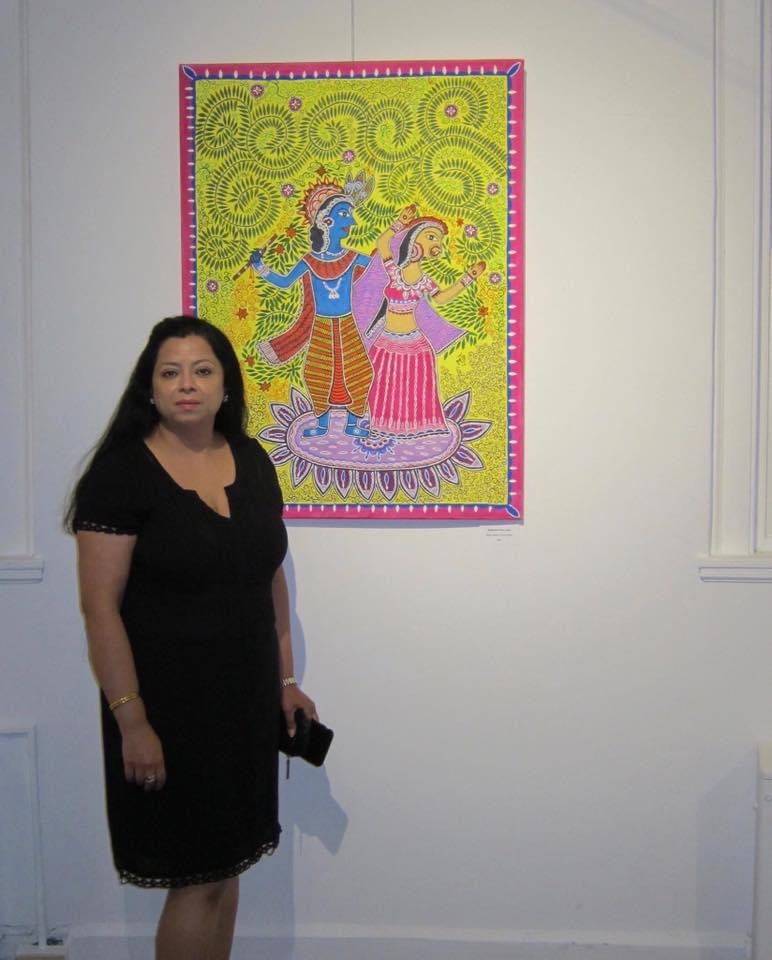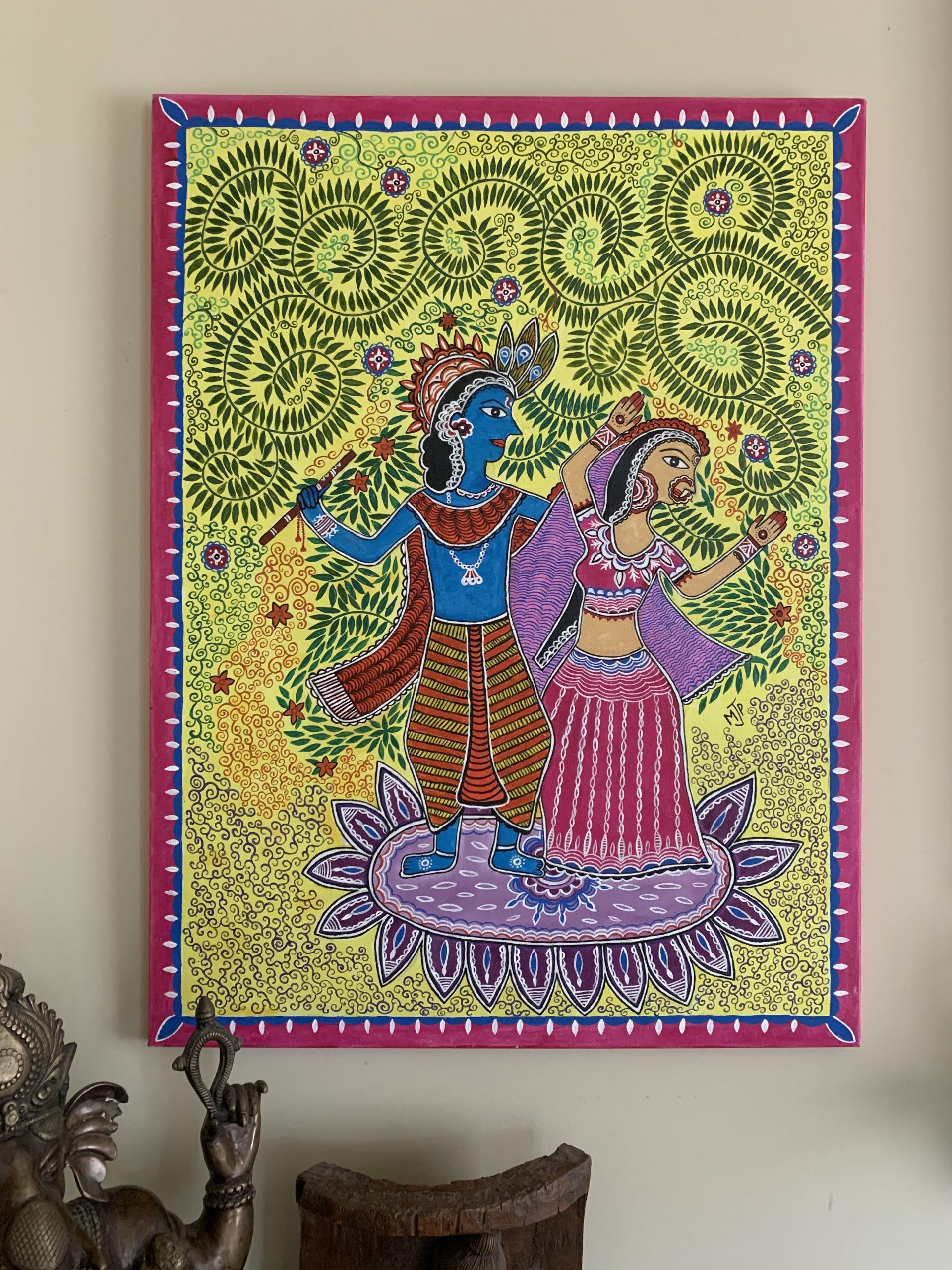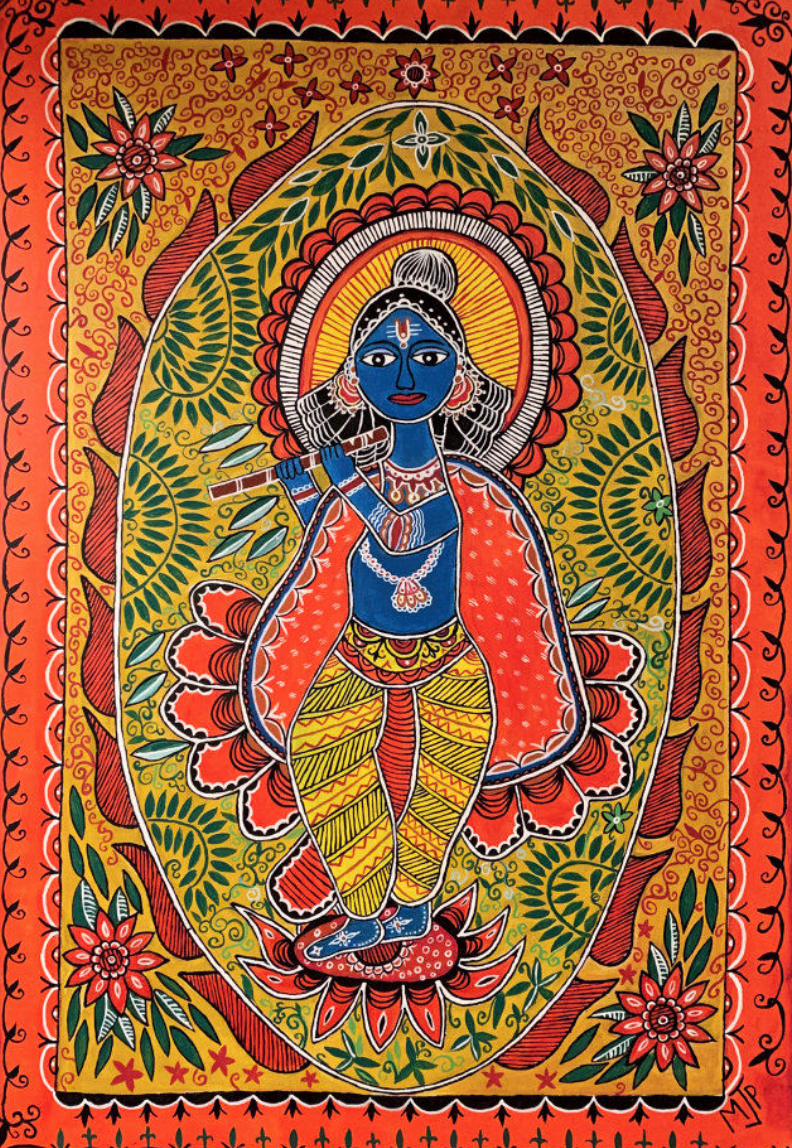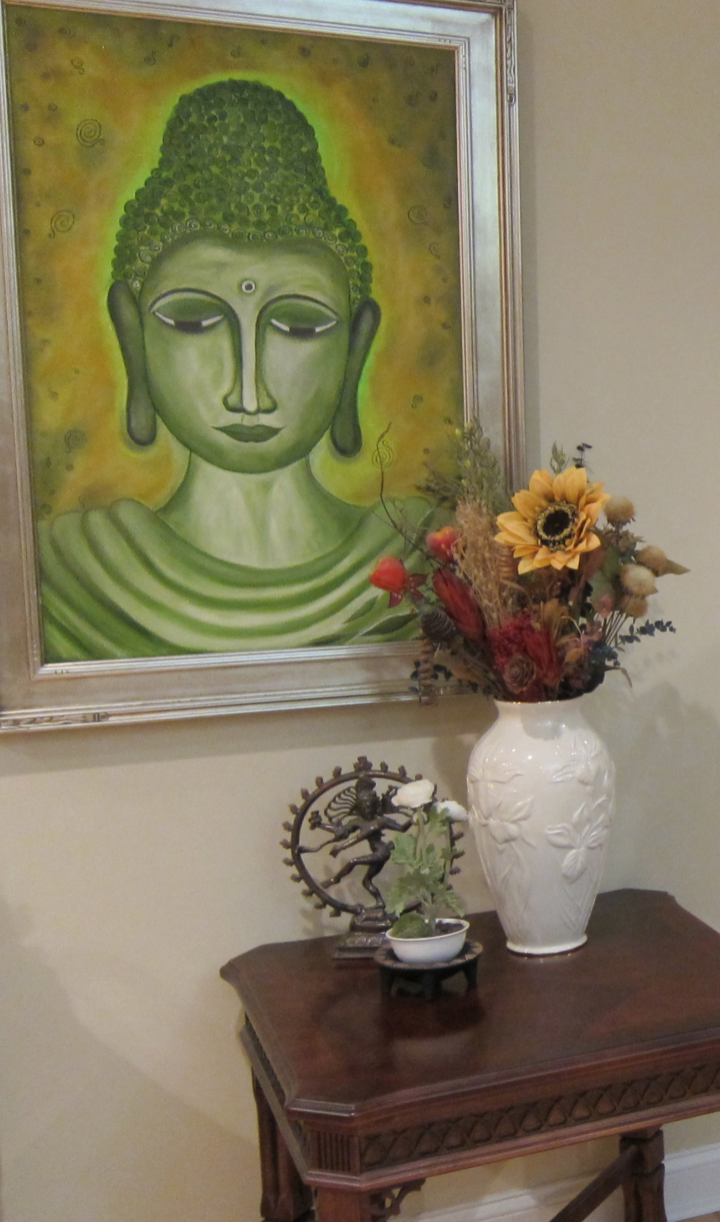WHO IS MONA PANDE?
Indian Folk Art Painter,
Madhubani, Rajesthsni Art, Pichwai Art, Rangoli Art, Warli Art
COUNTY:
Luzerne County
Mona Pande was born in India surrounded by family who immersed her in the practice of traditional Indian folk arts – specifically Madhubani, Rajesthsni Art, Pichwai Art, Rangoli Art, and Warli Art. She remembers vividly seeing her grandmother and aunts painting and being very attached to these various art forms.
“My aunt and my grandmother – they loved painting Rangoli art, Madhubani art and Rajesthsni art. My great-grandfather was a scholar and an Indian folk artist who painted in palaces in Uttaranchal, a fact which I found about from my dad after I started learning traditional arts myself.”
She traveled continually throughout India with her family and learned by watching various art forms performed by both skilled artists and everyday people in many different villages. She was fascinated and emotionally attached but didn’t begin her training until later in life when she began practicing these arts herself. Mona considers herself self-taught, and in the course of her studies, she went back to those many different villages to talk with those traditional artists and practitioners.
“I mainly work in the traditional Indian and folk art like Madhubani, Warli Art, Pichwai art, Rajasthani art, and Kerala mural and Kalighat art. In my paintings, I combine traditional Indian art with an element of my imagination. I have transferred traditional Indian folk art forms, which village women of India did hundreds of years back on their mud hut walls, to my canvases using oil and acrylic paint.”
Madhubani Art
From the Mithila region of India. Paintings are made with fingers, twigs, brushes, nib-pens & match sticks, using natural dyes. It is characterized by eye-catching geometric patterns and is made for particular occasions, such as births, marriages, and festivals. This form is 2500 years old.
Warli Art
This form is made on cave and clay walls with basic shapes. The circle represents the sun/moon. The triangles are mountains and trees. Humans are two triangles. Many show the tarpa dance – the tarpa being a trumpet-like instrument that is played in turns. People entwine their hands and move in a circle around the tarpet player.
Pichwai Art
From the Rajasthan area of India, this form is generally made on cloth and hung in temples and palaces. These paintings were made as a group effort of multiple skillful artists. Main subjects are often Krishna, cows, and/or a lotus.
Kerala Mural Paintings
From Kerala region of India, this form is from the 7th and 8th century AD. This art form is know for its bright colors and bold strokes. Yellow ochre, blue, green, white, black, and pure colors are used.
Rajasthani Art
Found in palaces and forts in Rajasthan, this form evolved in the 18th century. Paintings were usually of the royal family – most commonly hunting, horseback riding, or at weddings. Faces had long pointed noses and protruding eyes. The colors were bright and extracted from plants, stones, and even gold and silver.
Kalighat Painting
From West Bengal, this style has flowing brush strokes, bold eyes, and mainly primary colors. One main artist would draw the outlines, and other artists would color them in. With mass collaboration, around 200-300 paintings were produced per hour. This was a cheap way of producing art a few hundred years back. Most of the paintings were sold in Kali temples or in Calcutta bazaars as souvenirs.
Mona teaches folk art classes to students in schools and in the community in order to create a positive bonding in the community and to expose the local community to Indian folk art and the history behind it.
INTERVIEWS & EXHIBITIONS
https://instagram.com/myartpassion





